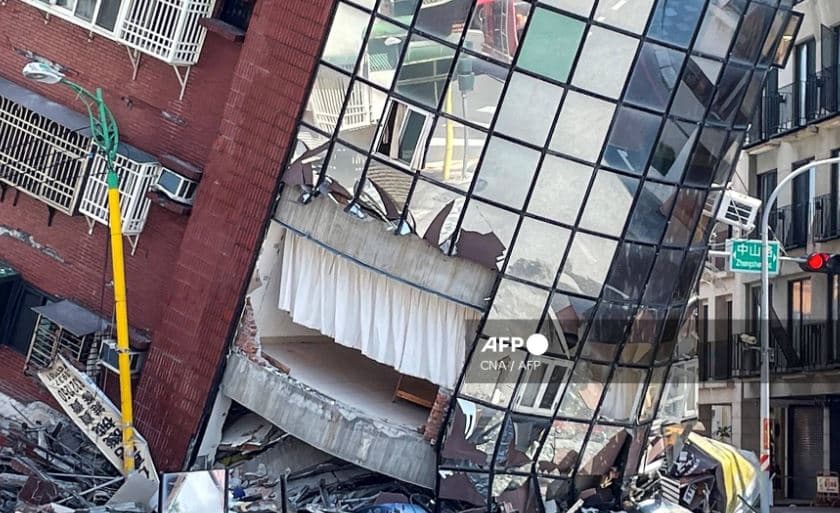A strong earthquake in Taiwan on Wednesday caused damage to dozens of buildings, triggered tsunami warnings that reached Japan and the Philippines before being withdrawn, and caused at least four confirmed deaths and about sixty injuries.
Authorities reported that the earthquake and its subsequent powerful aftershocks were the largest to hit the island in decades and issued a warning of additional tremors in the days to come.
"The earthquake is shallow and occurs near land. The director of the seismology center of the Taipei Central Weather Administration, Wu Chien-fu, stated that the feeling is widespread throughout Taiwan and the offshore islands.
Given that the island is located close to the meeting point of two tectonic plates, strict building codes and disaster awareness have prevented a significant tragedy.
Wu stated that the earthquake was the strongest since a 7.6-magnitude one that occurred in September 1999, the deadliest natural disaster in the island’s history, killing around 2,400 people.
The magnitude 7.4 earthquake that occurred on Wednesday occurred shortly before 8:00 a.m. local time (0000 GMT). The epicenter of the earthquake, according to the US Geological Survey, was located 34.8 kilometers deep and 18 kilometers (11 miles) south of Hualien City, Taiwan.
"I wanted to flee, but I had no clothes on. That was powerful, according to Kelvin Hwang, a visitor to a hotel in Taipei’s capital who took refuge in the ninth-floor elevator lobby.
Shared videos and pictures of buildings trembling during the earthquake nationwide were all over social media.
After it ended, there were dramatic pictures on local TV showing multi-story buildings in Hualien and other places tipped over.
There have been reports of landslides blocking roads leading to Hualien, a 100,000-person coastal city surrounded by mountains.
A boulder that had become loose on a hiking trail may have killed a single person, according to the Central Emergency Operations Center, which also stated that about 60 individuals had received treatment for injuries sustained during the earthquake.
Authorities in Taiwan, Japan, and the Philippines first issued a tsunami warning; however, the Pacific Tsunami Warning Center declared that the threat had “mostly passed” by around 10 am (0200 GMT).
The metro in the nation’s capital briefly stopped operating but soon resumed, and local borough leaders issued cautions to citizens to check for any gas leaks.
Taiwan is prone to earthquakes due to its location near the meeting point of two tectonic plates, while Japan, to the north, receives about 1,500 earthquakes annually.
Social media users in the eastern Chinese province of Fujian, which borders the southern province of Guangdong, as well as other places, reported feeling powerful earthquakes across the Taiwan Strait.
According to state news agency Xinhua, China, which views self-ruled Taiwan as a colony gone wild, was “paying careful attention” to the earthquake and “ready to provide disaster relief help.”
Most earthquakes in the region are mild, although the extent of the damage they do varies depending on the epicenter’s position and depth below the Earth’s surface.
The power of tsunamis, which are enormous, potentially catastrophic waves that can travel hundreds of kilometers per hour, is also dependent on several variables.
The largest recorded earthquake in Japan occurred in March 2011 off the northeast coast of the country and measured 9.0 magnitude. The earthquake caused a tsunami that killed or left over 18,500 people missing.
The Fukushima nuclear facility experienced the biggest post-war disaster in Japan and the worst nuclear accident since Chornobyl as a result of the 2011 tragedy, which also caused three reactors to melt down.
This year’s New Year’s Day earthquake in Japan was of a magnitude of 7.5, and it claimed over 230 lives—many of them from the collapse of older buildings.
